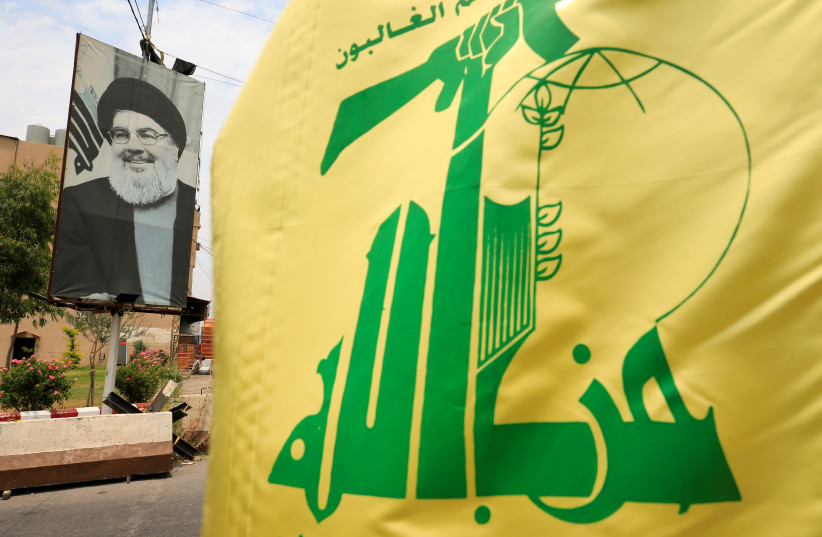A report on Lebanon’s MTV television station claimed over the weekend that Hezbollah is looking to take control of a historic golf course in the country – at any cost. According to a translation published by Israel’s Alma Research and Education Center, the terrorist group could be angling to do more than just sink some puts.
Alma covers security issues in northern Israel and often focuses on Hezbollah threats. Its report reads: “Why does Hezbollah want to take over this area? The areas bordering the golf club from the north and south are areas that we have located as belonging to the area used by Hezbollah’s medium-range Fatah 110 missile deployment infrastructure in the city of Beirut.”
The historic golf course contains dozens of acres of land. According to the report, Hezbollah is even working against the laws of the government and pressuring the local council to get the land. There are initiatives to use the lot, which borders the Iranian Embassy, for a national forest or Iranian-backed power plant. The course is just south of the embassy, a few hundred meters from the ocean and north of the airport.
Recent news reports have said that the golf course is not paying fees to the local council, but the representative of the course refuted this, saying it is simply pressure to close the club. The report said that this would change the cultural face of Lebanon, shifting a piece of history that dates back to the 1920s.
The Alma Center report noted that “in this area, there are launch, maintenance, and storage sites for these missiles array. The golf club course is located in the middle of this area, which is controlled by Hezbollah. Civilian activity on the golf course can reveal Hezbollah activity.

“In addition, the geographical terrain of the golf club course is very suitable for the location of launch and storage sites. Therefore, Hezbollah wants to take control of the entire area and create one sterile zone under its control” – a contiguous area of influence.
This isn't the first time
This isn’t the first time the course has found itself in the crosshairs. Back in October 2021, The Times noted that “rival factions are ripping Lebanon apart. Even golf is in their crosshairs.
“Beirut’s local club has been earmarked for a hotly contested Iranian power station to combat the energy crisis,” the report added, noting that “with its well-groomed putting greens, fairways dotted by palm trees and views over the Mediterranean, the last remaining golf course in Lebanon is not an obvious symbol of the country’s accelerating slide towards chaos.”
The local politicians at the Ghobeiry Municipal Council claimed that the club doesn’t pay enough rent for the 100 acres of land that its greens, sand traps and fairways rest on. However this appears to be an excuse; if Lebanon wanted to maintain the club, it could do so easily.
Some of the club’s woes have been known for years. Back in 2010, CNN said the area nestled amid “the southern, dirt-poor Beirut suburb of Dahiyeh holds many secrets. After all, this is Hezbollah’s stronghold, the power base of the militant Shia Muslim organization that has dominated Lebanese politics in recent years.”
Hezbollah leader Hassan Nasrallah’s portrait peers back on those driving to the course, hoping to get in a round before a day of work.
CNN noted at the time: “The Golf Club of Lebanon is an expanse of rolling greens and pristine fairways; state-of-the-art gyms and turquoise swimming pools; beautifully arranged flower beds and starched white polo tops, all in the midst of tightly-packed slums.”
That report claimed it was churned up by Israeli tanks in 1982. Course greenskeeper Ali Hammoud told CNN, “All the club was destroyed completely, we built the club up from zero. The front nine took about seven or eight months, but the back nine took three years to rebuild.”
The presence of Hezbollah and the Iranians in the area has long been known, part of the overall strategy of Hezbollah to festoon parts of Beirut with its weapons. The Alma report shows areas near the club alleged to be missile storage and potential launch sites, as well as a school. Hezbollah embeds itself in the civilian landscape.
A landscape like this, with putting greens and fairways, could be a hole-in-one landscape for Hezbollah to fire rockets or build tunnels. It is not entirely clear what the terrorist group would otherwise benefit from it, but it does mean it could get rid of outsiders who wander the links, while maintaining more control on another part of Beirut.
Overall, historically, the Hezbollah attempt to muscle out the club shows how it continues to digest parts of Lebanon. For Lebanese who want to preserve green spaces in Beirut, any changes to the course would be catastrophic.
